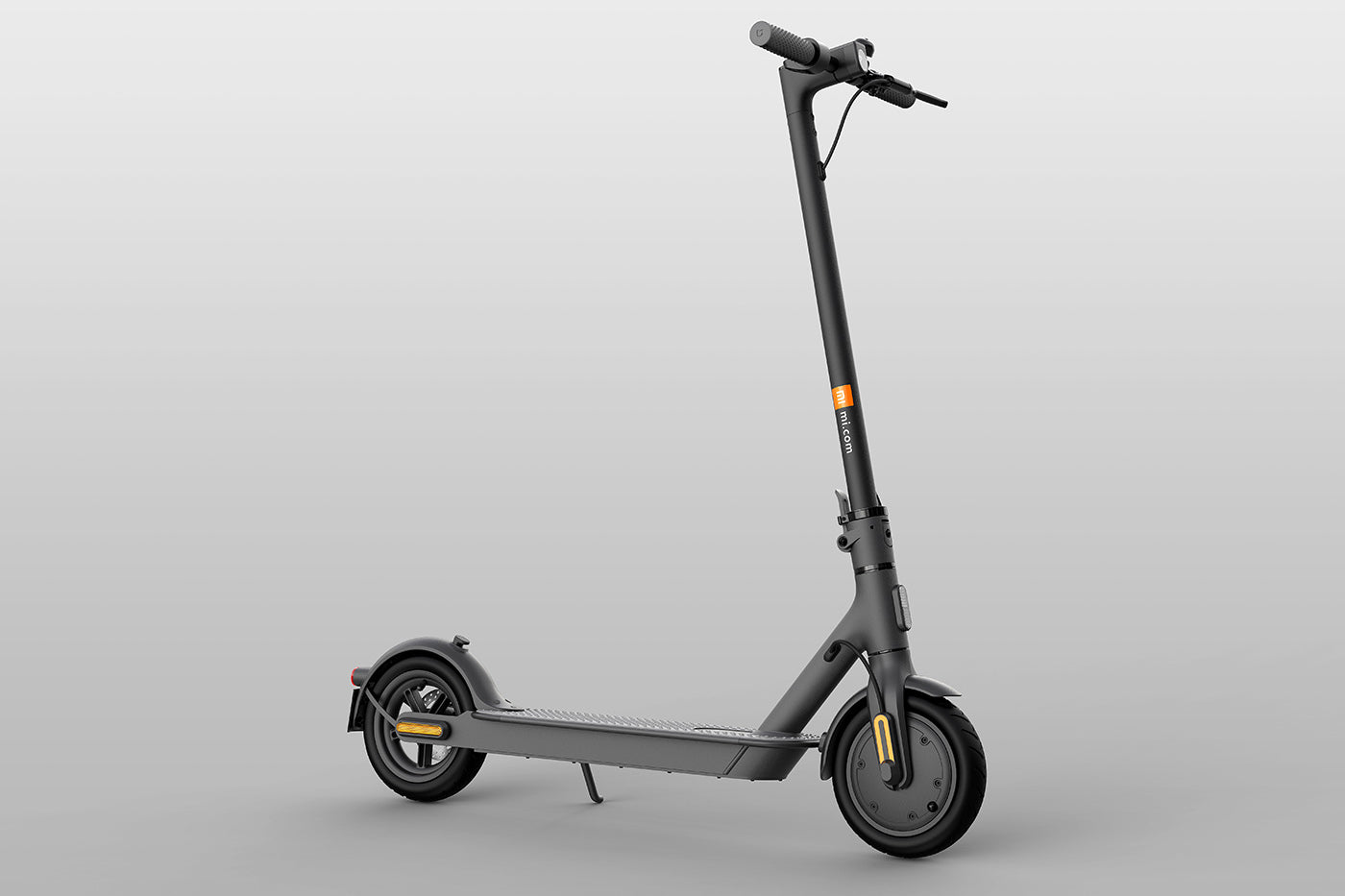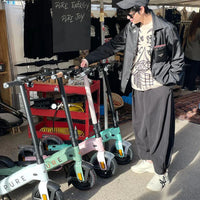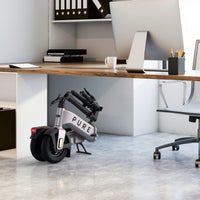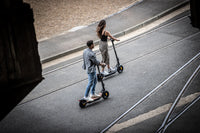
Head-to-head: Pure Air vs. Xiaomi M365 / 1S electric scooters
With the emergence of the Pure Air Pro as a real alternative to the established order in the e-scooter world, buyers have had a genuine alternative versus the most popular electric scooters on the market.
Now, with the Pure Air, riders can enjoy many of the same premium features, which have made their way to a lower price point, creating a great value e-scooter that can compete with the traditional king of the hill – the Xiaomi M365.
With the M365 giving way to the almost identical 1S model heading into 2021, we thought we’d share how the two competitors stack up in a head to head. Here’s our comparison of both e-scooters, so that you can pick which one is right for you

Water resistance

The Pure Air electric scooter retains the Pure Air Pro’s headlining IP65 water resistance, which means that it can deal with “low-pressure jets (6.3mm) of directed water from any angle”. This gives it effective water resistance against rain and riding through puddles.
The M365 / 1S is rated for “protection from water splashes in all directions” (IP54), although importantly, closer inspection of its manual reveals warnings to not ride it in the rain, and that any water ingress will void the warranty.
The Pure Air warranty covers riding in the rain and through puddles, which means that not only is its rated durability in wet conditions improved, but you’ll also be able to have it fixed free of charge if an issue does arise.
Click here to learn more about waterproof e-scooters.
Max load and build quality

When it comes to e-scooter sturdiness, a model designed to carry a heavier load is a good sign of improved build quality. The Pure Air retains the impressively high 120kg maximum load that first arrived in the Pure Air Pro despite its low price, while the M365 / 1S features a 100kg limit.
At the same time, a stronger chassis boosts durability – enabling it to deal with impacts and poor surfaces more easily, potentially improving long-term reliability too.
Why maximum loads are about more than just rider weight
Speed and power

For speed and power – the Pure Air and M365 / 1S are practically identically matched. Both feature a 250W-rated motor, and both max out at a 25km/h top speed.
One difference between the two really worth noting, which we’ll cover later under ‘braking and safety’, is the positioning of the motors. The Xiaomi features a front wheel motor, while the Pure’s motor is situated in the rear wheel. This can influence handling and control, much like it does in a car.
Range and battery

Range is an important factor for those wanting to carry out longer rides, or many shorter rides between charges. Once again, the two e-scooters score a draw, with up to 30km of range achievable for both models: a figure which is heavily dependent on factors like ride conditions, loading and how they are ridden.
Premium Panasonic battery cells are fitted to the Pure Air, which helps to increase long-term lifespan, while it has a fast 4.5 hour battery recharge time from empty. The Xiaomi M365 / 1S’s battery charges a little more slowly at 5.5 hours.
Braking and safety

The Pure Air and Xiaomi M365 / 1S have differing approaches when it comes to braking, thanks to the positioning of the motors. The Air’s motor is positioned in the rear wheel, and so the electronic brake that it houses is also situated there too. The M365 / 1S has similar functionality in the front wheel.
As a result, the most powerful and controllable brakes, which are controlled by a lever, are in opposite wheels too. The Air has a front wheel mechanical brake, while the M365 / 1S has one in the rear wheel. This has implications for the control a rider might experience, because when you slow down, your mass swings forward a little, meaning that you arguably want the majority of your powerful braking to be done at the front wheel to avoid skidding. Skids are cool, but not necessarily the safest way to stop!
Meanwhile, the other difference is the tyre of mechanical brake; the Pure Air has a drum brake, while the M365 / 1S has a disc brake. A disc brake arguably produces sharper stopping power, but a drum brake is less exposed to the elements, resulting in fewer maintenance needs.
Control and comfort

As we highlighted in our previous head-to-head between Xiaomi and Pure e-scooters, the size of the wheels has the biggest part to play when it comes to ride comfort and control over poor surfaces. The Air is fitted with 10-inch wheels (compared to the 8-inch wheels on the M365 / 1S), which makes dealing with bad paving much easier, while riders benefit from higher grip and ride comfort too.
Both e-scooters feature air-filled tyres, our pick when it comes to tyre choice, while you can have both with puncture prevention fluid pre-installed at Pure Electric.
Portability and storage

With the Pure Air’s sturdy water resistant construction, the Xiaomi M365 / 1S is able to save some weight on its counterpart. A full 4kg lighter, this can make a difference if a truly major concern for you is being able to carry it up multiple flights of stairs or for long distances.
However, both are carriable for short walks and up small flights of stairs, with easily-activated collapsing mechanisms that enable easy storage.
Warranty and support

Both the Xiaomi and Pure warranties are among the best offered by any manufacturer. Xiaomi’s warranty covers the M365 / 1S for two years, which is one of the longest warranty periods available today.
Pure’s warranty for the Air is one year long, but does include coverage for riding in the rain and the 120kg maximum load, which the M365 / 1S’s warranty can’t match.






